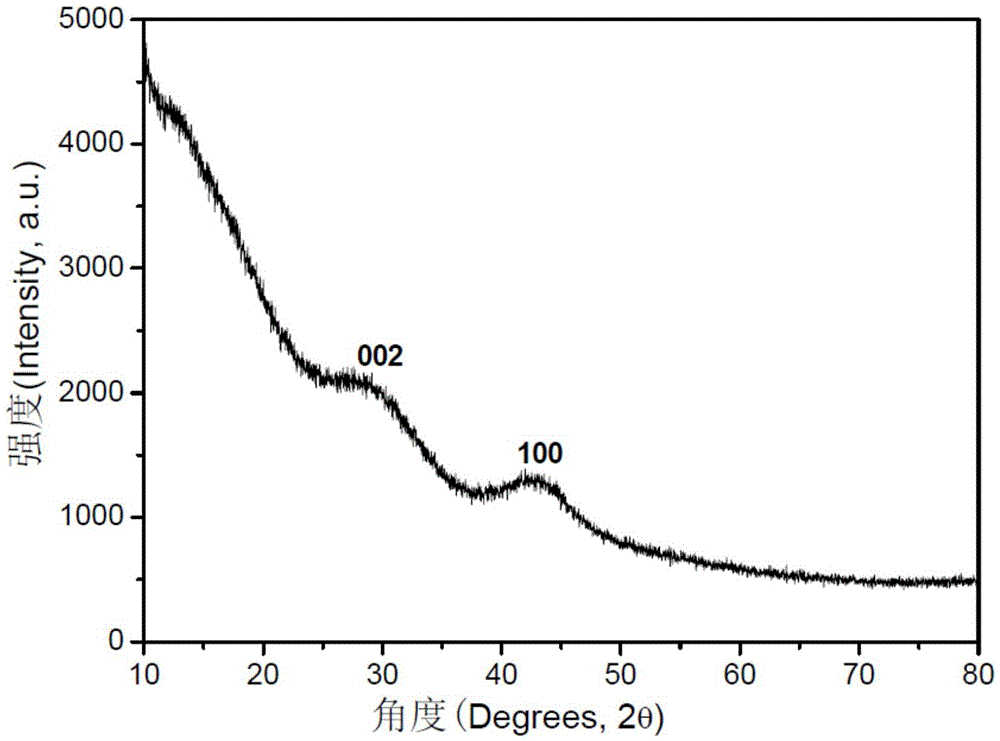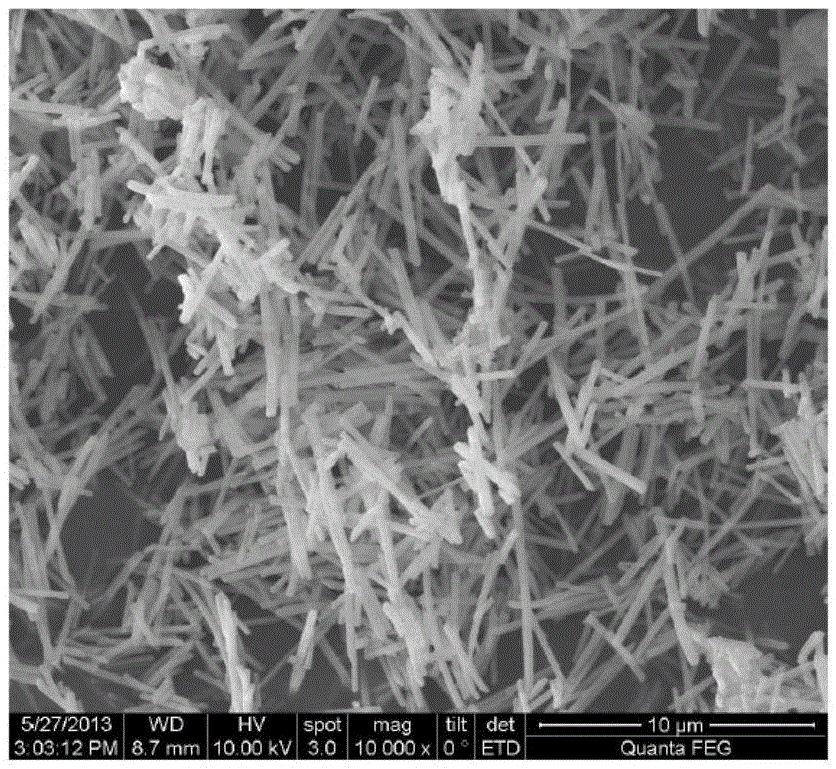Preparation method of porous carbon nanorods with high specific surface area
A high specific surface area, porous carbon technology, applied in nanotechnology, nanotechnology, nanotechnology, etc. for materials and surface science, can solve the problems of cumbersome steps, small specific surface area and low purity of carbon nanorods, and achieve cost Low, high specific surface area, effect of high specific surface area
- Summary
- Abstract
- Description
- Claims
- Application Information
AI Technical Summary
Problems solved by technology
Method used
Image
Examples
Embodiment 1
[0032] This embodiment provides a method for preparing porous carbon nanorods with high specific surface area, which includes the following steps:
[0033] Weigh 2.6g of zinc acetate dihydrate (10mmol) and 2.5g of trimesic acid (12mmol), dissolve them in 100mL of DMF, stir at room temperature for 0.5h, and then conduct solvothermal treatment at 140°C for 2 days to obtain the solid Wash slowly with DMF, then with approximately 75 mL of CHCl 3 Exchange for 24 hours, repeat three times, and finally vacuum dry at 80°C for 5 hours to obtain a white powder, that is, a zinc trimesate metal-organic framework, and its XRD pattern is as follows: figure 1 shown;
[0034] Put the white powder in a nitrogen atmosphere, raise the temperature to 950°C at a rate of 5°C / min, and then keep it at this temperature for 2 hours to obtain carbon nanorods, and its XRD pattern is as follows figure 2 As shown, its BET specific surface area is 6510m 2 / g, langmuir specific surface area is 9163m 2 / ...
Embodiment 2
[0036] This embodiment provides a method for preparing porous carbon nanorods with high specific surface area, which includes the following steps:
[0037] Weigh 10mmol of zinc nitrate tetrahydrate and 12mmol of trimesic acid, dissolve them in 100mL of DEF, stir at room temperature for 0.5h, and then conduct solvothermal treatment at 140°C for 1 day, slowly wash the obtained solid with DEF, and then use About 55mL of CHCl 3 Exchange for 24 hours, repeat three times, and finally vacuum dry at 80°C for 3 hours to obtain a white powder;
[0038] The white powder was placed in a nitrogen atmosphere, the temperature was raised to 910° C. at a rate of 2° C. / min, and then kept at this temperature for 4 hours to obtain carbon nanorods.
Embodiment 3
[0040] This embodiment provides a method for preparing porous carbon nanorods with high specific surface area, which includes the following steps:
[0041] Weigh 100mmol of zinc chloride and 10mmol of trimesic acid, dissolve them in 200mL of DMAC, stir at room temperature for 0.5h, then carry out solvothermal treatment at 100°C for 2 days, wash the obtained solid slowly with 100-200mL of DMAC, and then With about 100mL of CHCl 3 Exchange for 12 hours, repeat three times, and finally vacuum dry at 80°C for 8 hours to obtain a white powder;
[0042] The white powder was placed in a nitrogen atmosphere, the temperature was raised to 980° C. at a rate of 15° C. / min, and then kept at this temperature for 2 hours to obtain carbon nanorods.
PUM
| Property | Measurement | Unit |
|---|---|---|
| pore size | aaaaa | aaaaa |
| adsorption capacity | aaaaa | aaaaa |
| adsorption capacity | aaaaa | aaaaa |
Abstract
Description
Claims
Application Information
 Login to View More
Login to View More - R&D
- Intellectual Property
- Life Sciences
- Materials
- Tech Scout
- Unparalleled Data Quality
- Higher Quality Content
- 60% Fewer Hallucinations
Browse by: Latest US Patents, China's latest patents, Technical Efficacy Thesaurus, Application Domain, Technology Topic, Popular Technical Reports.
© 2025 PatSnap. All rights reserved.Legal|Privacy policy|Modern Slavery Act Transparency Statement|Sitemap|About US| Contact US: help@patsnap.com



